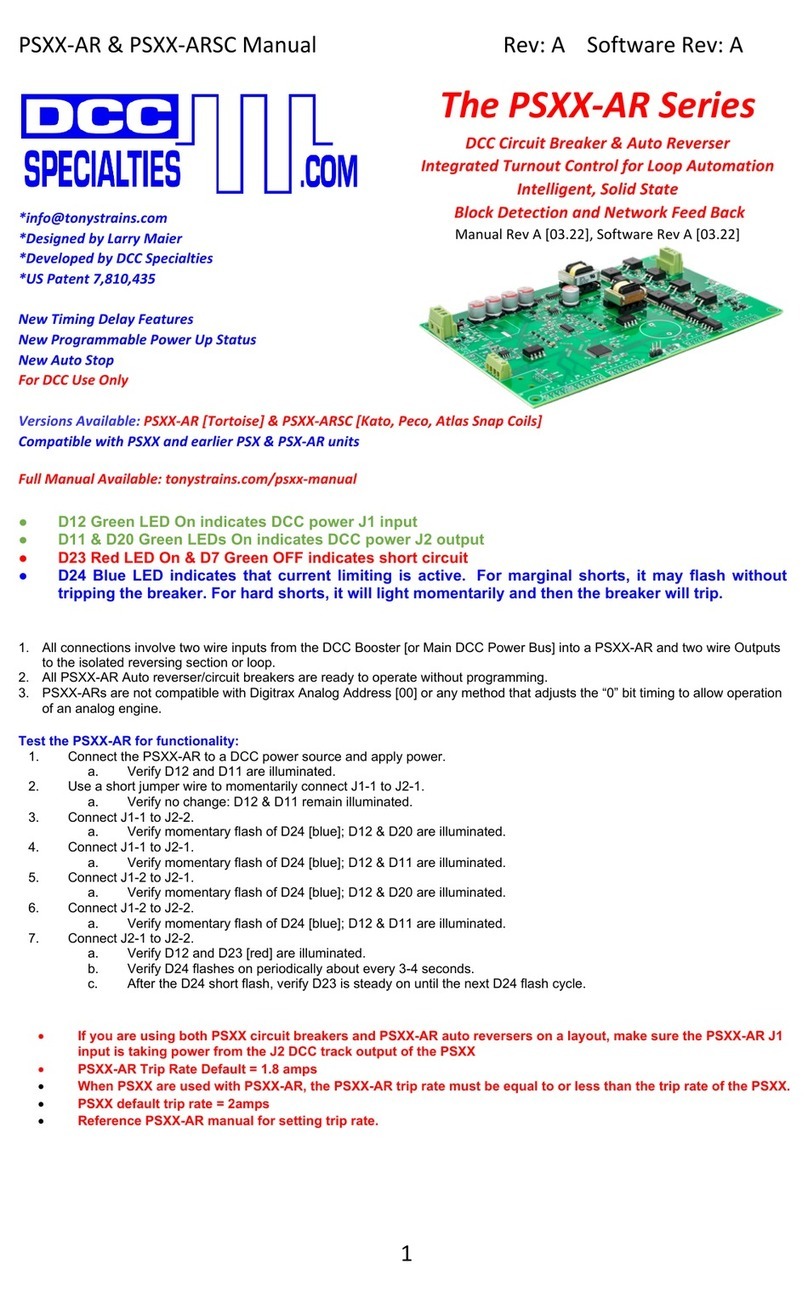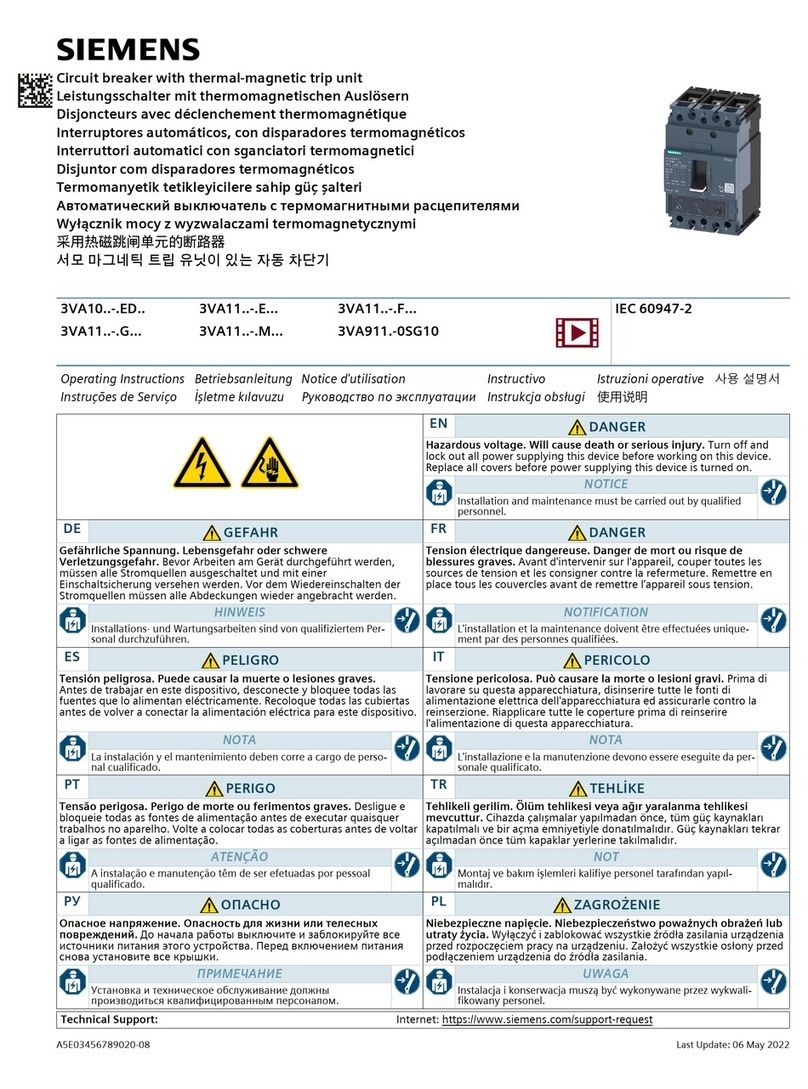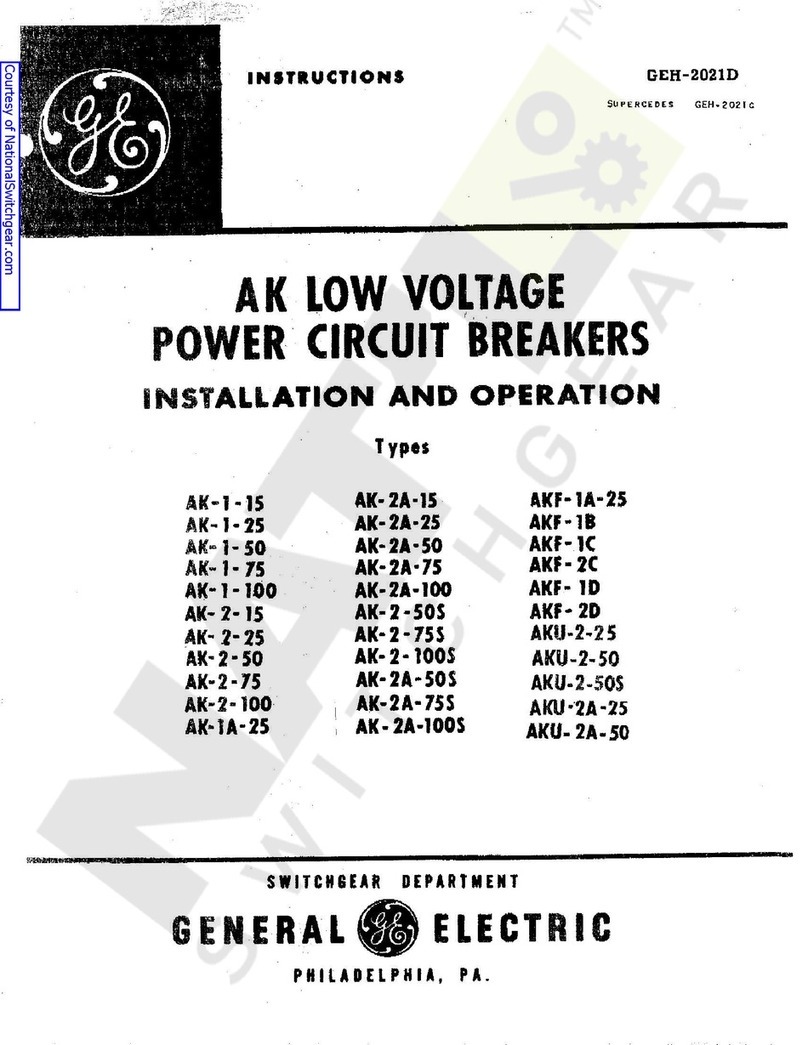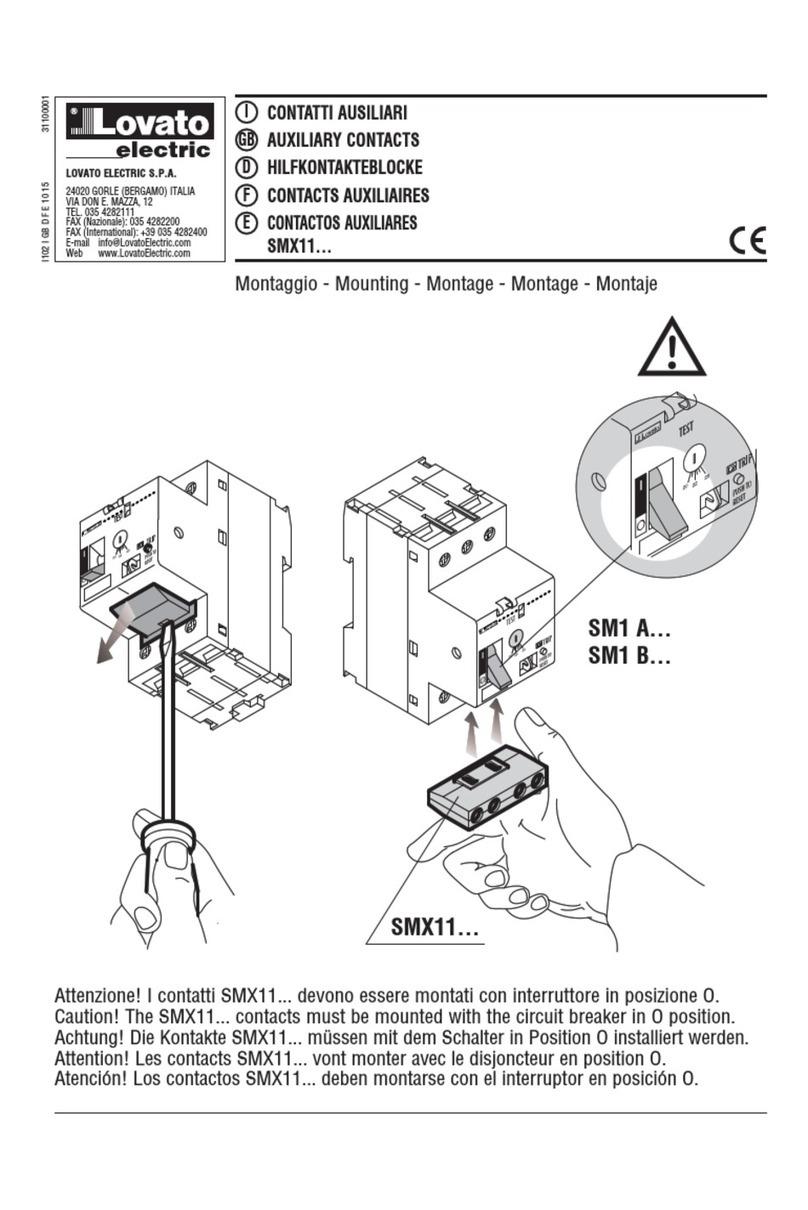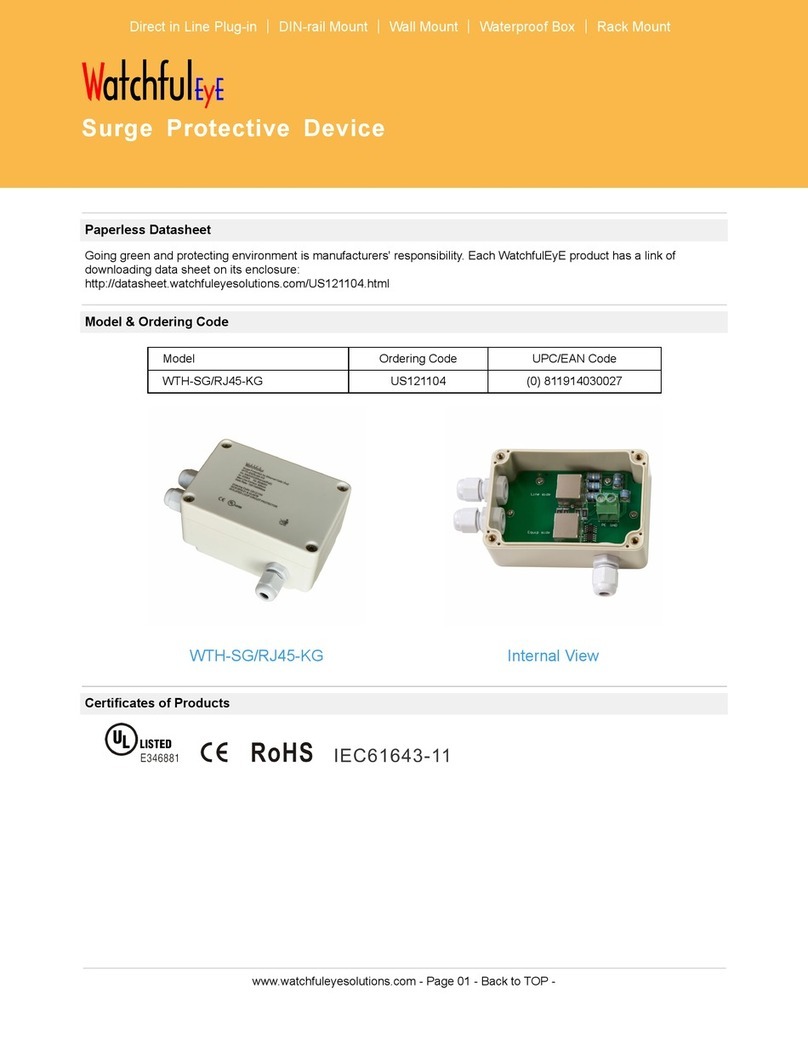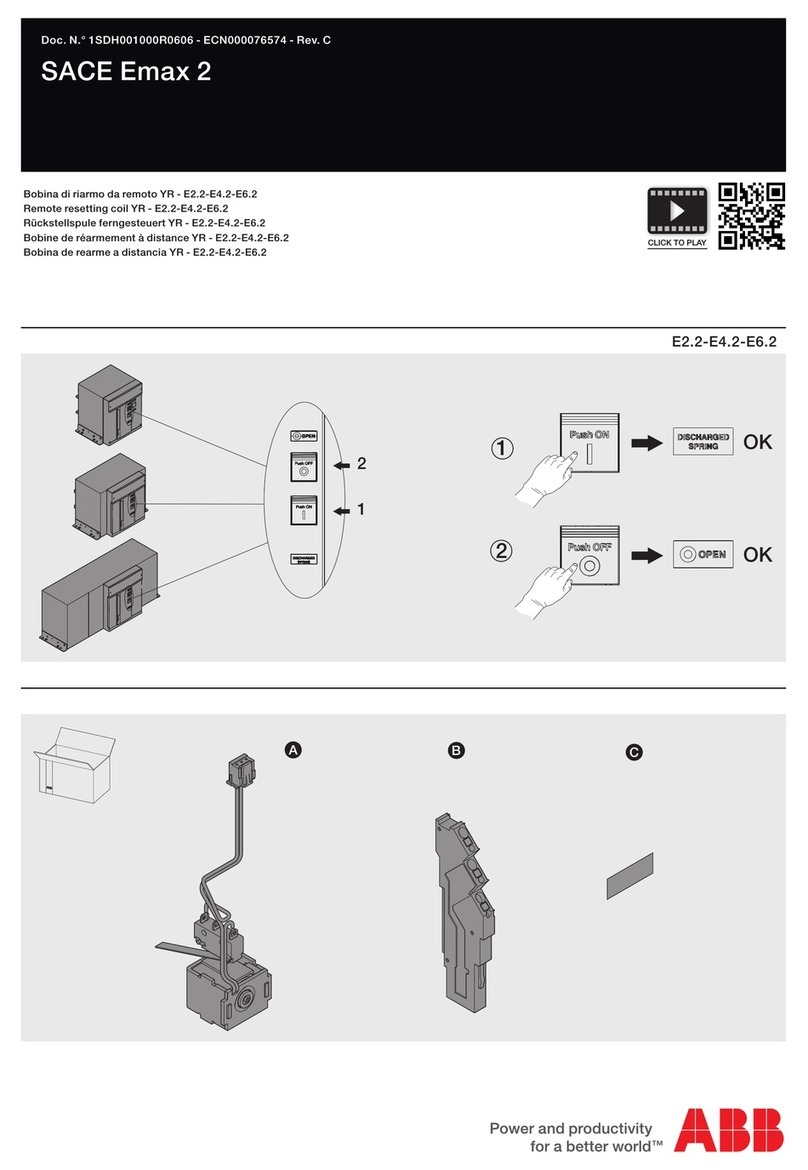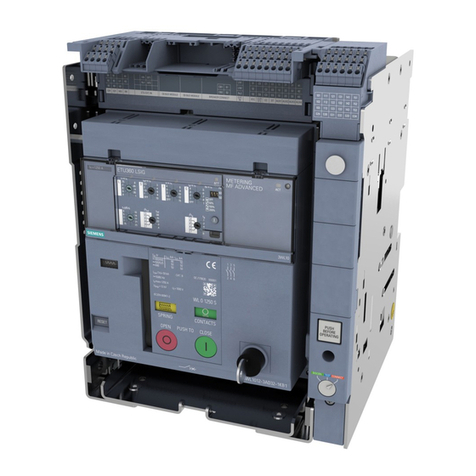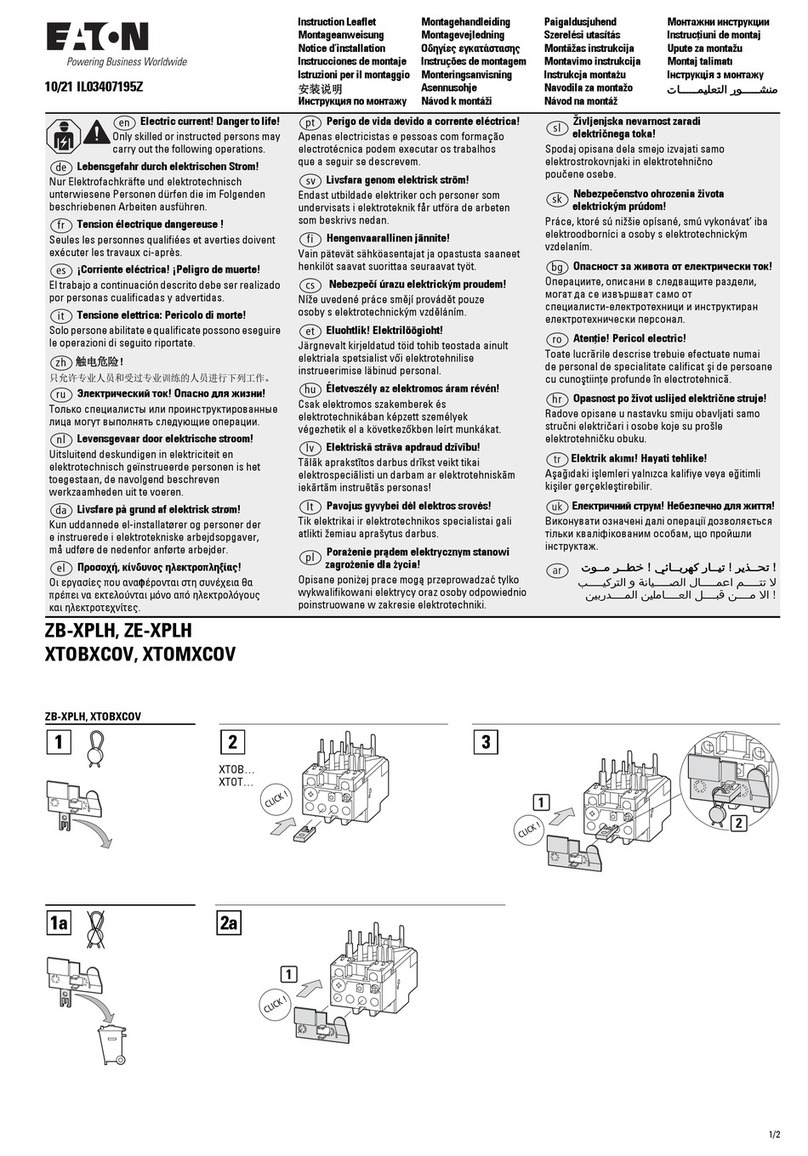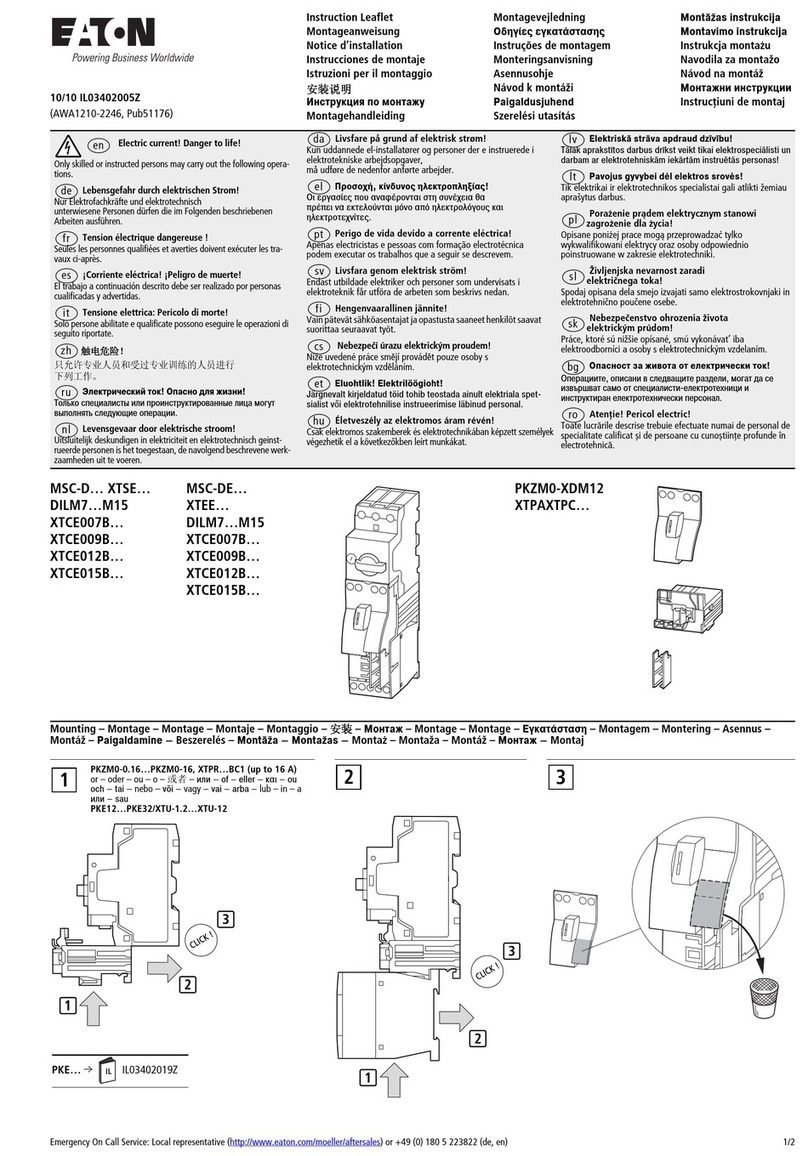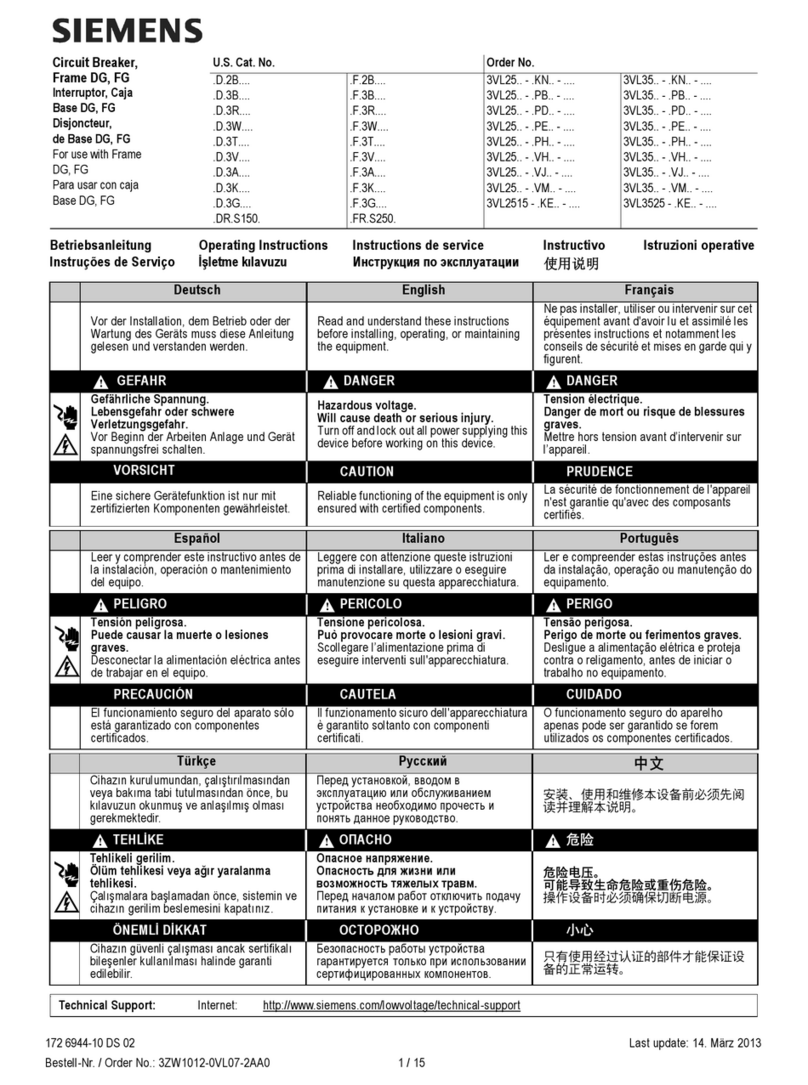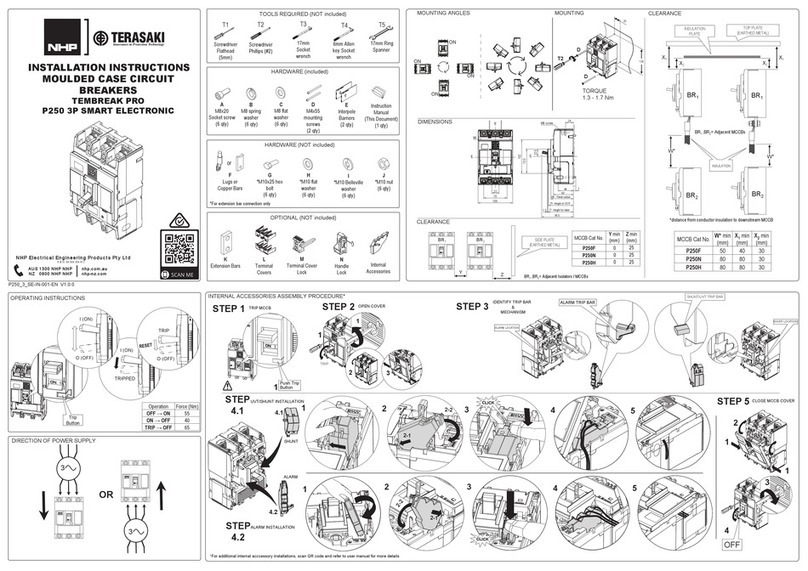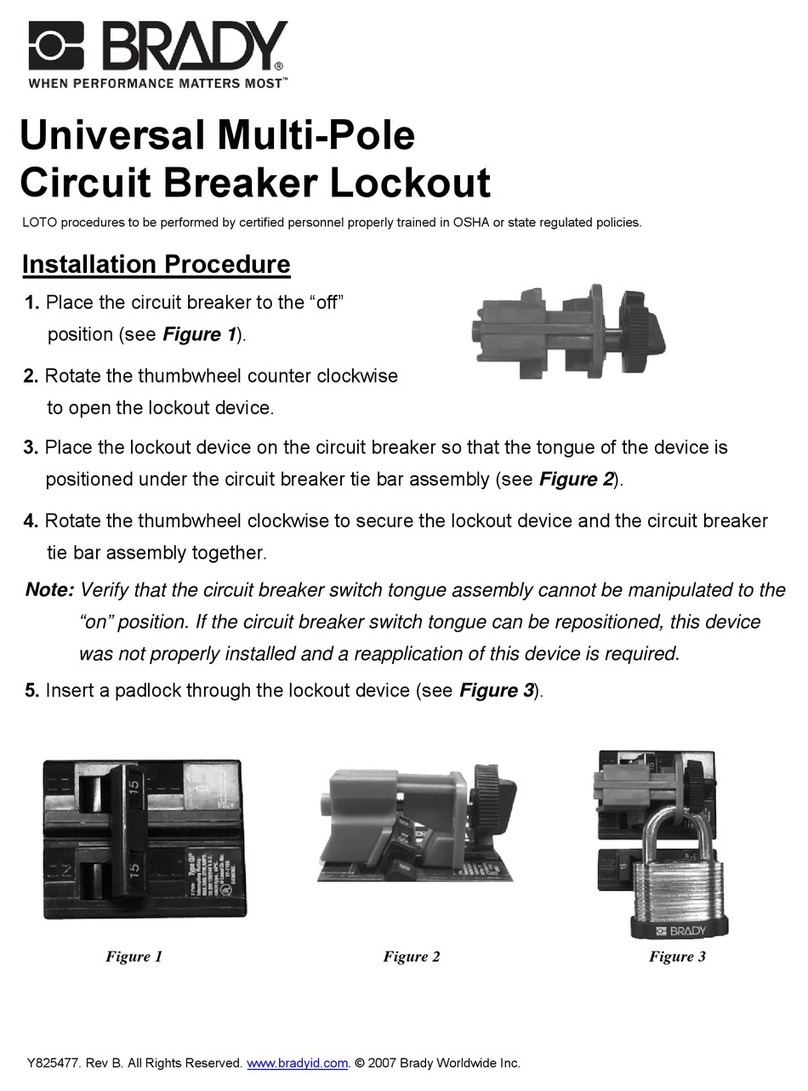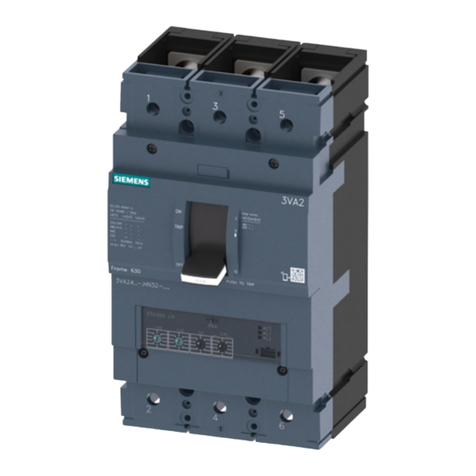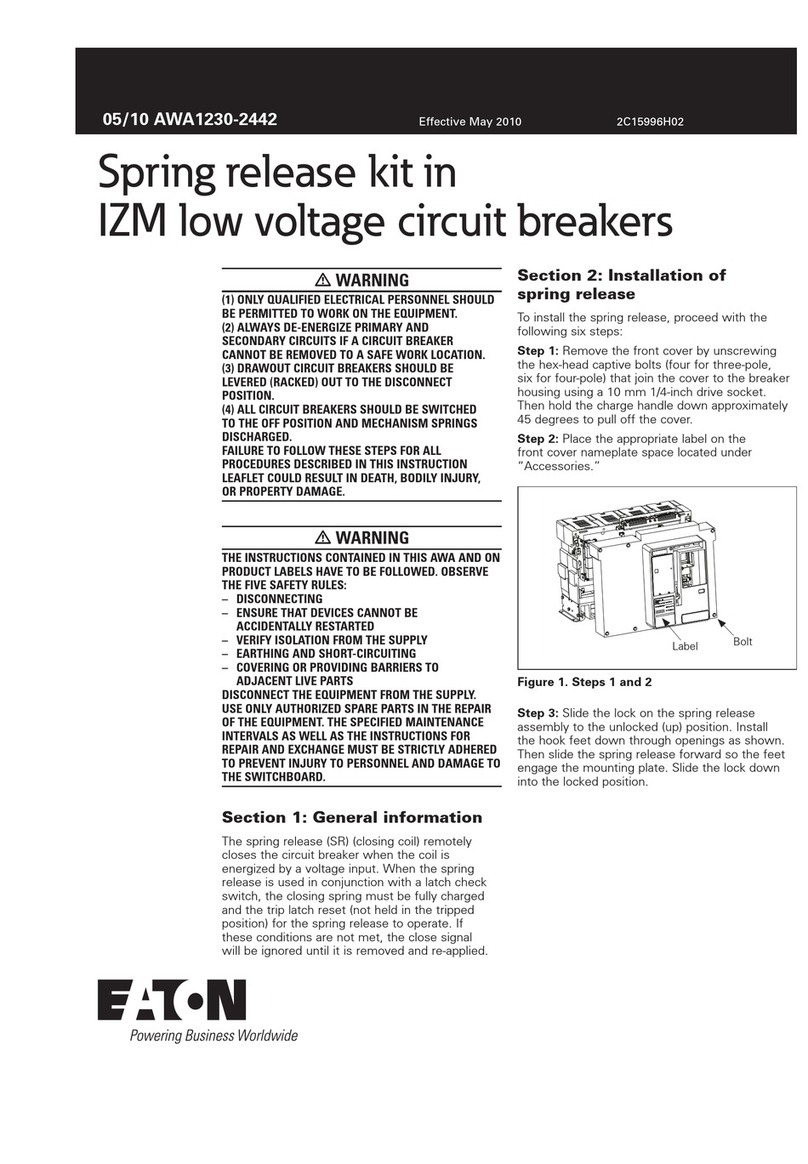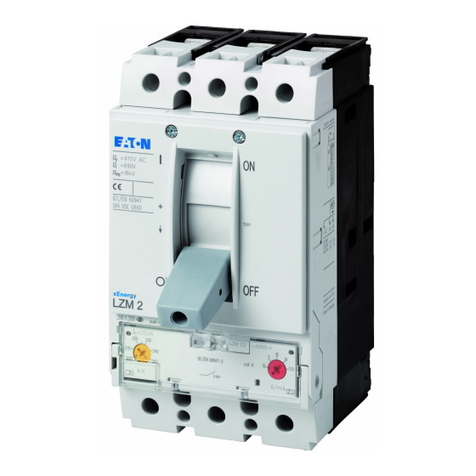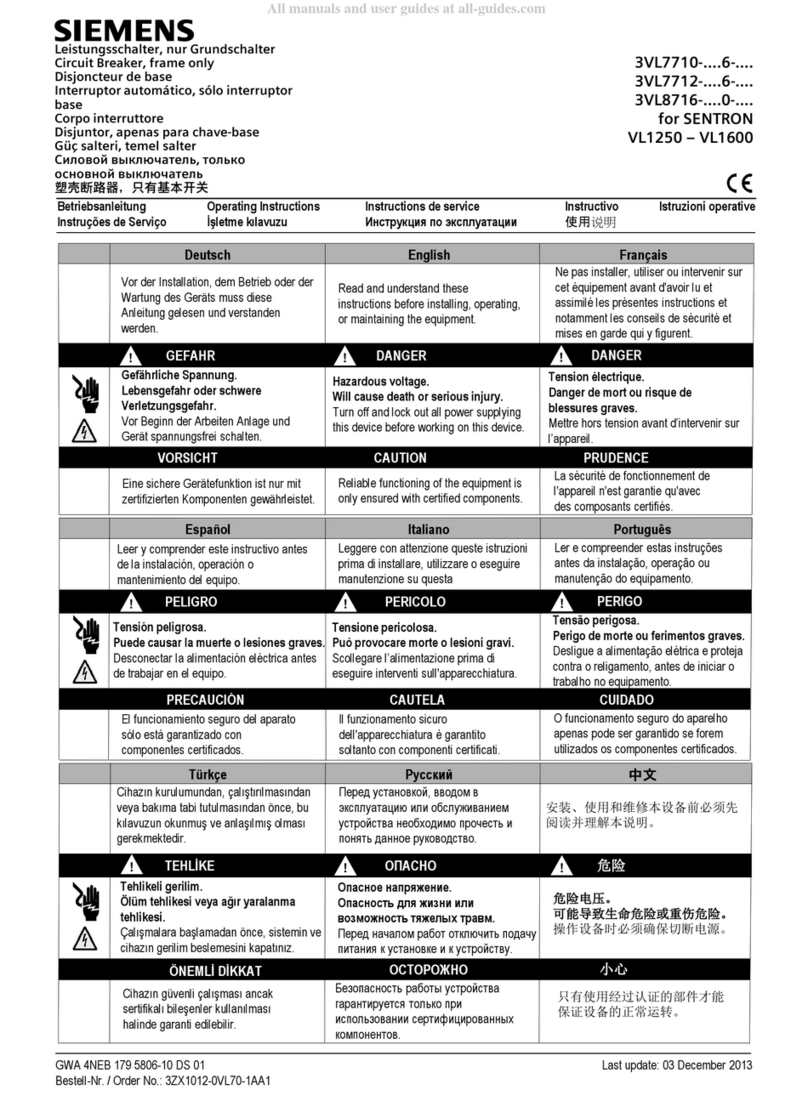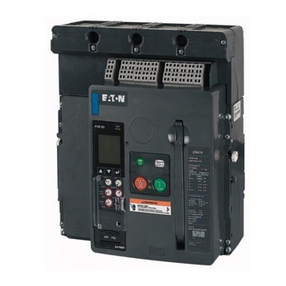DCC Specialties PSXX-AR Series User manual

PSXX-AR & PSXX-ARSC Manual Rev: A Software Rev: A
1
The PSXX-AR Series
DCC Circuit Breaker & Auto Reverser
Integrated Turnout Control for Loop Automation
Intelligent, Solid State
Block Detection and Network Feed Back
Manual Rev A [03.22], Software Rev A [03.22]
*info@tonystrains.com
*Designed by Larry Maier
*Developed by DCC Specialties
*US Patent 7,810,435
New Timing Delay Features
New Programmable Power Up Status
New Auto Stop
For DCC Use Only
The PSXX-AR series is a product of years of research into problems dealing with false overloads
that cause premature shut down of DCC Boosters and other Circuit Breakers. These false overloads
are caused by large capacitors used in sound systems, decoders, and lighted passenger cars. The
overload appears as a short circuit until the capacitors are charged. The logic on the PSXX-AR
Series determines if the load is a true short or just an overload due to a discharged capacitor. A
PSXX-AR also has the logic & power to control switch machines at the throat of a reversing loop.
Versions: PSXX-AR [Tortoise] & PSXX-ARSC [Kato, Peco, Atlas Snap Coils]
PSXX-AR & PSXX-ARSC are functionally identical EXCEPT the turnout motor type control
Compatible with PSXX, Frog-AR and earlier PSX & PSX-AR units
• Automatic Coordination of Auto Reverse and Circuit Breaker Tasks: The PSXX-AR is both an
auto reverser and circuit breaker.
• Automates Reverse Loop Turnouts: Integrated Stall Motor or Snap Coil Decoder,
automatically lines up switch machines when the polarity is reversed. Switch machine can
also be controlled with standard DCC Accessory Commands and push buttons.
• Track Output Terminal J11 indicates when phase/turnout is normal or reversed by LED status.
• Block Detection: Either a photocell or block current draw can be used to detect a train in a
block and to trigger a Block Occupied output. The current trigger level is programmable.
• Auto Stop with DCC Reset: A photocell can be connected a PSXX-AR input. Normally, covering
the photocell will not cause any action. If the photocell is armed with a DCC command, the
PSXX-AR will turn off the next time the photocell is covered. A DCC command can restore the
track power when desired.
• All Solid-State Operation: Fast, solid-state design, reliable quiet action, no clicks or sparks.
• Adaptive Load Reset: Electronically determines if the overload is a real short or due to excess
capacitance in sound decoders or lighted passenger cars.
• Over Voltage Protection: The PSXX-AR incorporates a voltage suppression diode that limits
voltage spikes on your layout.

PSXX-AR & PSXX-ARSC Manual Rev: A Software Rev: A
2
• Wide Range of Current Trip Setting: The breaker trip current can be adjusted over a range of
1 to 10 amperes. Trip current values are selected by setting a CV. Certain selected values can
be set by placing jumpers on the board. Default trip current is about 2 amperes, which will
work correctly for most DCC systems including the NCE Power Cab and Digitrax Zephyr DCS52
• Very Low Voltage Drop: Total breaker on resistance is less than 0.060 ohms; the PSXX-AR has
a very low voltage drop even at high currents. Better than detectors that use a diode voltage
drop.
• Manual or Automatic Reset: Automatic reset: Breaker tries to reset every 2 seconds. The
reset delay can be set to a different value by changing a CV. Manual reset: Once the breaker
trips, it remains off, ensuring complete isolation of the faulty block. The breaker is reset
either by a switch or by a DCC command.
• Power On/Off by DCC: Turn on/off output track power with your DCC Throttle!
• Power On/Off by Toggle Switch: Turn on/off the J2 track output by connecting a toggle
switch to J41-J42 & programming CV52=66
• Programmable Power Up Status: When power is applied to the layout, the PSXX-AR can be
set to always turn on, always remain off [power on as needed by DCC command], or to use
the power status present when the layout was last shut down.
• Outputs for LED Indicators: Remote LEDs can be added to monitor input/output power status.
• Network Feedback: Isolated outputs designed to provide Block Occupied, Block Shorted, and
Power Status to a discrete interface for remote display or computer control. Will work with
Digitrax LocoNet, NCE Cab Bus, ESU ECoS, and Lenz XpressNet interfaces.
• System Reset: CV63=42 sets all CVs and addresses to original factory values.
• Output for Audio Alert: An audible sounder can be added to the card to provide an audible
alert if there is a short.
• No Power Supply Needed: The PSXX-AR uses the track DCC to supply its operating power. It
draws less than 0.04 amperes.
• Easy to install: Board size is 115 x 178mm with 4 mounting holes sized for a #6 screw.
• Flash Programmable: The PSXX-AR firmware can be updated as new features become
available or if older units need to be matched to a recent purchase.
Instruction Manual Contents
A. Quick Start
B. User Guidelines
C. How to Determine Power Districts
D. PSXX-AR Wiring
E. PSXX-AR Reverse Section Examples
F. Terminal Wiring Descriptions
G. Terminal Functions
H. PSXX-AR Accessory Addresses
I. Programming CV’s & Values
J. CV Settings
K. Special Programming Instructions
L. Add On Circuits for the PSXX-AR
M. DCC System Sequential Programming Instructions

PSXX-AR & PSXX-ARSC Manual Rev: A Software Rev: A
3

PSXX-AR & PSXX-ARSC Manual Rev: A Software Rev: A
4
A. Quick Start
1. PSXX-AR & PSXX-ARSC are functionally identical EXCEPT the turnout motor type
control
2. All connections involve two wire inputs from the DCC Booster [or Main DCC Power Bus]
into a PSXX-AR and two wire Outputs to the isolated reversing section or loop.
3. PSXX-AR Auto reverser/circuit breakers are ready to operate without programming.
4. PSXX-ARs are not compatible with Digitrax Analog Address [00] or any method that
adjusts the “0” bit timing to allow operation of an analog engine.
PSXX-AR LED Key
• D12 LED Green Power On From Booster
• D11 LED Green Power On To Track [Normal Phase]
• D20 LED Green Power On To Track [Reverse Phase]
• D23 LED Red Short Circuit/Over-Current
• D24 LED Blue Current Threshold Exceeded Indicator
Test the PSXX-AR for functionality:
1. Connect the PSXX-AR to a DCC power source and apply power.
a. Verify D12 and D11 are illuminated.
2. Use a short jumper wire to momentarily connect J1-1 to J2-1.
a. Verify no change: D12 & D11 remain illuminated.
3. Connect J1-1 to J2-2.
a. Verify momentary flash of D24 [blue]; D12 & D20 are illuminated.
4. Connect J1-1 to J2-1.
a. Verify momentary flash of D24 [blue]; D12 & D11 are illuminated.
5. Connect J1-2 to J2-1.
a. Verify momentary flash of D24 [blue]; D12 & D20 are illuminated.
6. Connect J1-2 to J2-2.
a. Verify momentary flash of D24 [blue]; D12 & D11 are illuminated.
7. Connect J2-1 to J2-2.
a. Verify D12 and D23 [red] are illuminated.
b. Verify D24 flashes on periodically about every 3-4 seconds.
c. After the D24 short flash, verify D23 is steady on until the next D24 flash
cycle.
NOTE:
• D12 intensity may vary during this test.
• D12 and D23 may be dim or off while D24 is on.
Determining the software revision of your PSXX-AR:
1. Turn OFF DCC Power to the PSXX-AR
2. Put the PSXX-AR in program mode by the placing JP1 plug on JP1.1-JP1.2 pins
3. Turn ON DCC power to the PSXX-AR.
4. D23 will flash the Morse code pattern of the software revision letter.
For example, the PSXX-AR will flash short-long for software revision A.

PSXX-AR & PSXX-ARSC Manual Rev: A Software Rev: A
5
B. User Guidelines
1. Ensure the Programming Jumper is on pins JP1.2-JP1.3 to operate [Pin JP1.1 is nearest
the center of the PSXX-AR circuit board]
2. Cut isolating gaps in the rails between PSXX/PSXX-AR zones.
a. Stagger gaps 0.75” [21mm]
3. When using PSXX and PSXX-AR, make sure the PSXX J2 DCC track output feeds
power to the PSXX-AR J1 DCC track input [see following diagrams]
4. Input & Output connectors J1 and J2 are designed for use with 14-22 AWG wire.
a. Turn screw on connector’s counter-clockwise while looking at the connector opening.
b. Make sure the wire clamp is at the bottom of the connector opening.
c. Insert the wire you are connecting and turn the connector screw clockwise to tighten.
5. If you are using a heavier bus wire such as 10-12 AWG, solder a short length of 14
AWG wire to your heavier bus to connect to the PSXX-AR terminal.

PSXX-AR & PSXX-ARSC Manual Rev: A Software Rev: A
6
6. We recommend rail drops to the track bus every 3-5 feet. Insufficient feeders can cause
your track voltage to be significantly lower than your booster output voltage.
7. When wiring more than one PSXX or PSXX-AR [PSXX-2, PSXX-3, PSXX-AR] insure all
input/output polarities are the same.
8. The PSXX-AR Circuit breaker is designed to operate by opening both of the two input
leads when an overload is detected.
a. In “normal” polarity [D11 Green LED ON, D20 OFF], J1-1 is connected to J2-1, J2-3,
J2-5 and J1-2 is connected to J2-2, J2-4, J2-6.
b. In “reverse” polarity [D20 Green LED ON, D11 OFF] J1-1 is connected to J2-2, J2-4,
J2-6 and J1-2 is connected to J2-1, J2-3, J2-5.
c. The reverse loop should NOT use a common rail wiring scheme. Both rails must be
isolated from the rest of the layout for the PSXX-AR to work properly.
d. If the PSXX-AR breaker function activates, J1-1 and J1-2 are disconnected from ALL
J2 connections.
9. Connect the two wires from the DCC Booster to the PSXX-AR J1-1 & J1-2 INPUT terminal.
10. When Power is applied to the PSXX-AR, the D12 LED near the J1 Input and the D11 or
D20 LEDs near the J2 Output should be on.
11. If the D23 LED near the JP1 Programming Jumper is on solid, you may have a short
between the two wires from the J2 Output or in the track section.
12. Test the PSXX-AR installation prior to running a train:
a. Observe your DCC booster is not shorted.
b. Use a suitable metal object to short the track.
c. The status LED D23 should come on and D11 AND D20 near the output should be
off.
d. Your booster should not trip during this test [D12 stays on].
13. If your booster does trip during this test [D11/D20 goes off or flashes on and off], it may
not be able to support automatic reset.
a. Install a wire Manual Reset jumper on J7.3-J7.4 and repeat the test.
b. Your booster should now remain on [D11/D20 stays lit].
c. With a Manual Reset wire jumper in place, you can reset the PSXX-AR by sending an
accessory ON command [check your system manual for correct key sequence] to
accessory address 2042
d. With a Manual Reset wire jumper in place on J7.3-J7.4, you can also reset the
PSXX-AR by connecting a Normally Closed momentary push button in series with
the Manual Reset jumper. Pressing the button will reset the PSXX-AR.
***PSXX-AR LED Outputs do not require resistors***

PSXX-AR & PSXX-ARSC Manual Rev: A Software Rev: A
7
C. How to Determine Power Districts
There are two types of power districts: Single power district per booster or multiple power
districts on a single booster. In either case, you want a PSXX or PSXX-AR protecting each
power district. If you have a single booster for a power district, you still want a PSXX-1
protecting that district. The reason is that the protective circuitry in the booster is designed to
protect the booster, NOT your $1000 fully lit, full sound, decoder equipped, fully detailed scale
model. The PSXX series IS designed to protect your models. For multiple power districts per
booster, you want to use multiple PSXX-1, PSXX-2, PSXX-3. Each PSXX feeds a district, and
the inputs of the PSXX are daisy chained together to a single booster.
Probably the best way to determine where to place power districts is to take a look at the
expected current draw [primarily locomotive motors which use power] for each operating
location on the layout. For example, a busy yard might have several switchers, one or more
trains on the arrival and departure tracks, another train or two passing the yard on the main,
and maybe a peddler local working nearby industries. If some or all of these trains have more
than one locomotive, you could have 10 to 15 current drawing units all competing for power
in a fairly small area. Assuming all the locomotives have efficient motors, this type of power
requirement [amps] may be large enough to overload a DCC system powered from one 5
Amp booster. For example, if you have four PSXX set to the default current [2 amps], each
PSXX will trip at 2 amperes. If each power district draws slightly less than two amperes, that
is a total of slightly less than 8 amps. None of the PSXX will trip, but your 5-amp booster will
certainly shut down. You can solve this by lowering the trip current on each of the four PSXX,
getting a booster with a higher current rating, or splitting the four districts on one booster to
two districts on each of two boosters.

PSXX-AR & PSXX-ARSC Manual Rev: A Software Rev: A
8
***PSXX-AR LED Outputs do not require resistors***

PSXX-AR & PSXX-ARSC Manual Rev: A Software Rev: A
9
Based on our experience, a typical HO scale 5 Amp system can support up to 10 operators
using a 12-14 AWG bus and 20 AWG feeders. Many users overestimate the amount of
Booster power needed. Try using the PSXX Series first. If your DCC Booster overloads from
excess current draw, you need to add an extra DCC Booster to support the concentration of
trains in this location. By dividing a layout into power districts in this manner, and using a
combination of boosters and circuit breakers, you can make the most efficient use of available
power on any mid-size or large-size layout.
Another thing you want to keep in mind while designing power districts is how each district is
used. In a yard area, for example, there is a higher risk of derailments occurring with their
associated shorts. You might want to isolate this area into a separate district so that a short
in the yard will not stop mainline operations.
D. PSXX-AR Wiring
Wire to the PSXX-AR should be heavy enough to carry the current efficiently. The size of
wire depends on your scale. Too much resistance in the wire or rails can result in faulty
short sensing, voltage drop and poor performance. At a minimum, we recommend the
following stranded gauge wires to prevent potential problems:
• N Scale 18 AWG bus, 22 AWG rail feeders
• HO Scale 14 AWG bus, 20 AWG rail feeders
• O Scale 12 AWG bus, 16 AWG rail feeders

PSXX-AR & PSXX-ARSC Manual Rev: A Software Rev: A
10
We recommend using stranded pair wire such as speaker or lamp cord wire for bus wiring.
If you’re using two individual stranded wires, make sure to twist the wire 4 to 6 times every
foot. You can make your own twisted pair wire by placing two ends of the wire in a drill bit,
chuck the drill tight, and then turn on while you or something else holds the other end.
E. PSXX-AR Reverse Section Examples
Reverse Section Notes
1. The PSXX-AR Zone is longer than your longest train
2. Make sure isolating rail gaps are offset by 0.75” [21mm]
3. If your train is longer than your reverse block and has metal wheels:
a. You may need to cut additional gaps in the REVERSE SECTION.
b. Simply cut another set of gaps at BOTH ENDS of the reverse sections inside
of the original gaps.
c. The distance between new gaps and original gaps should be longer than the
wheelbase of any metal truck.

PSXX-AR & PSXX-ARSC Manual Rev: A Software Rev: A
11

PSXX-AR & PSXX-ARSC Manual Rev: A Software Rev: A
12
F. Terminal Wiring Descriptions
J1 Input Power Connector
● J1-1 DCC Power Input A [from DCC Booster]
● J1-2 DCC Power Input B [from DCC Booster]
J2 Output Power Connector
● J2-1 Switched DCC Power Output A [“normal” polarity]
● J2-2 Switched DCC Power Output B [“normal” polarity]
● J2-1 Switched DCC Power Output B [“reverse” polarity]
JP1 Program Jumper
● JP1-1 & JP1-2 Place jumper on pins 1 & 2 for Programming Mode
● JP1-2 & JP1-3 Place jumper on pins 2 & 3 for Operations Mode
J4 Block Occupancy & Block Shorted
● J4-1: GND Manual OFF J2 Output -
● J4-2: Input Manual OFF J2 Output +
● J4-3: Output Block Shorted Emitter
● J4-4: Output Block Shorted Collector
● J4-5: Output Block Occupied Emitter
● J4-6: Output Block Occupied Collector
J5 Status Outputs [Remote]
● J5-1: +Remote D23 [RED] Anode
● J5-2: - Remote D23 [RED] Cathode
● J5-3: + Input Photocell
● J5-4: - GND Photocell
***PSXX-AR LED Outputs do not require resistors***

PSXX-AR & PSXX-ARSC Manual Rev: A Software Rev: A
13
J6 Trip Current Settings by Jumpers
● No Jumpers = 1.8 amperes [default]
● J6-1 to J6-2 = 2.7 amperes
● J6-3 to J6-4 = 0.9 amperes
● J6-1 to J6-2 & J6-3 to J6-4 = 3.6 amperes.
● Set trip current using either wire Jumpers or Programming CV 49: NOT BOTH
J7 Auto/Manual Reset & Powering LEDs
● J7-1: +5V Output for powering external LEDs, etc. in conjunction with Block Occupied or
Block Shorted outputs. Maximum load should be less than 25mA.
● J7-2: GND Return connection for J7-1 5V output
• J7-3 to J7-4 with wire Jumper: Manual Reset [open to reset]
• J7-3: Auto/Manual Reset
• J7-4: GND
o The user can install a normally closed push button switch in series with the jumper.
o Open the switch to reset the PSXX or send an accessory ON command to the PSXX on-off
command address
• J7-5: Over-current Indication Output
• J7-6: GND
o J7-5 to J7-6 output mirrors D24.
J9 TBD
J10 DCC Power In Remote LED Indicator Output
● J10-1: +Remote D12 [Green] Anode
● J10-1: - Remote D12 [RED] Cathode
J11 Track Power On Remote LED Indicator Output
● J11-1 & J11-2 Output is on any time that D20 [GREEN] is on indicating Reverse phase
output
● This output should ONLY be connected to an isolated LED.
● J11-3 J11-4 Output is on any time that D11 [GREEN] is on indicating Normal phase
output.
● This output should ONLY be connected to an isolated LED.
● J11-1: Remote D11 Green Remote Track On Reverse cathode -
● J11-2: Remote D11 Green Remote Track On Reverse anode +
● J11-3: Remote D20 Green Remote Track On Normal cathode -
● J11-4: Remote D20 Green Remote Track On Normal anode +
J12 Stall Motor Output
● J12-1: Stall Motor #1 +
● J12-2: Stall Motor #1 –
● J12-3: Stall Motor #2 +
● J12-4: Stall Motor #2 -
J13 Snap Coil Output
● Kato 2 wire switch machines use pins 1 & 4
● Peco/Atlas 3 wire switch machine will use pins 1,2,4
● J13-1: Pulse Motor Coil 2/Coil -
● J13-2: Pulse Motor Coil 1/2 V+
● J13-3: Pulse Motor Coil 1/2 V+
***PSXX-AR LED Outputs do not require resistors***

PSXX-AR & PSXX-ARSC Manual Rev: A Software Rev: A
14
G. Terminal Functions
J1 – DCC power input connections from the DCC booster.
J2 – DCC track power output terminal from the PSXX-AR circuit breaker to the track.
JP1 – Programming & Operation jumper.
• Normal operating configuration is when the jumper is in the JP1-2 to JP1-3
position.
• Place the jumper in the JP1-1 to JP1-2 position to enter programing mode.
J4-1 and J4-2 Provide manual on/off control of the J2 track output
• If CV52=66, then a connection from J4-1 to J4-2 will turn off the J2 outputs and override all
other control commands.
• If CV52 is any other value, the Manual OFF input has no effect.
o J4-1 to J4-2 MUST use a connection isolated from other circuitry such as a toggle switch,
relay contact, or a transistor output optical isolator
***PSXX-AR LED Outputs do not require resistors***

PSXX-AR & PSXX-ARSC Manual Rev: A Software Rev: A
15
J4-3 [+] and J4-4 [-] are connected together [up to 5 mA] when the breaker has detected a
short circuit and open during normal operation. This is an optically isolated open collector
transistor and provides no power [See diagram p.20]
J4-5 [+] and J4-6 [-] are open if the block is not occupied and are connected together [up
to 5 mA] if the block is occupied. This is an optically isolated open collector transistor and
provides no power [See diagram p.19]
J5-1 [+] and J5-2 [-] are for a remote status LED.
• The remote LED will duplicate the state of D23
J5-3 [+] and J5-4 [-] are the inputs for the photocell detector used for the stopping function
and/or the block occupancy function:
● Be sure there is sufficient light above the cell to trigger the circuit.
● You can use a white LED to illuminate the photocell.
● Whenever you arm the photocell, it assumes it is uncovered and adjusts its
sensitivity to the current lighting conditions.
● It is sensitive across the light spectrum. White will be best.
● The photocell sensitivity is calibrated to the local light intensity each time the
photocell is armed.
● You can order the photocell sensor through Tony’s Train Exchange.
J6 Terminal Sets the current trip level.
• When CV49=00 [default], trip current is 1.8 amperes if no jumpers are installed.
• No Jumpers = 1.8 amperes [default]
• J6-1 to J6-2 = 2.7 amperes
• J6-3 to J6-4 = 0.9 amperes
• J6-1 to J6-2 & J6-3 to J6-4 = 3.6 amperes.
• 1.8 or 0.9 amps is the correct setting for the NCE Power Cab
• Set trip current using a wire jumper or Programming CV 49: NOT BOTH
J7-1 and J7-2 are available for powering external LEDs, etc. in conjunction with Block
Occupied or Block Shorted outputs. [See diagram p.19 & p.20]
• Maximum load should be less than 25mA.
• J7-1 is the 5v output and J7-2 is the GND Return connection for the J7-1 5V output
J7-3 to J7-4 are the auto/manual reset inputs.
• If the connections are open, the breaker will automatically try to reset every two
seconds [default].
• If the terminals are connected together with a SPST toggle switch or N/C push
button switch, then the breaker will remain off after a short until the connection
from J7-3 to J7-4 is momentarily opened or an accessory ON command is sent to
the PSXX on-off accessory address.
J7-5 & J7-6 Over-current Indication Output
• This output mirrors D24 and may be used with an LED
• If it is connected to anything other than an isolated LED, it must be connected to
the LED input of an optical coupler.
• The optical coupler transistor output can then be connected to any desired
equipment.
***PSXX-AR LED Outputs do not require resistors***

PSXX-AR & PSXX-ARSC Manual Rev: A Software Rev: A
16
J8 Do not make any connections. Used to program factory software
J10-1 [+] and J10-2 [-] output is on any time that D12 [GREEN] is on.
• This output should ONLY be connected to an isolated LED.
• Use an optical coupler interface for all other uses.
J11-1 [+] and J1 1-2 [-] Output is on any time that D20 [GREEN] is on indicating REVERSE
phase output
• This output should ONLY be connected to an isolated LED
• Use an optical coupler interface for all other uses.
J11-3 [+] and J11-4 [-] Output is on any time that D11 [GREEN] is on indicating NORMAL
phase output
• This output should ONLY be connected to an isolated LED
• Use an optical coupler interface for all other uses.
J12-1 & J12-2 Stall Motor Output [PSXX-AR Version Only]
• J12-1: Connect to Tortoise #1 [Tortoise pin 1+]
o Output is approximately 12V when the J2 output is Normal phase and
approximately 0V when J2 is Reverse phase.
o Output is on continuously
• J12-2: Connect to Tortoise #1 [Tortoise Pin 8-]
o Output is approximately 0V when the J2 output is Normal phase and
approximately 12V when J2 is Reverse phase.
o Output is on continuously
• J12-3: Same as J12-1. May be used to operate a second Tortoise Machine.
• J12-4: Same as J12-2. May be used to operate a second Tortoise Machine.
J13 Snap Coil/Pulse Motor Output [PSXX-ARSC Version Only]
• Kato 2 wire switch machines use J13-1 and J13-4
• Peco, Atlas and 3 wire switch machines use J13-1, J13-2 & J13-4
• J13-1: Pulse Motor Coil 2/Coil [-] Output connects to ground for approximately 0.5
seconds when phase changes normal to reverse.
o Otherwise at V+
• J13-2: Pulse Motor Coil 1/2 V [+] is connected to J13-3.
o Common coil wire for twin coil (3 wire) machine.
o Not used for Kato 2 wire machine which connects to J13-1 to J13-4
• J13-3: Pulse Motor Coil 1/2 V [+] is connected to J12-2
o Common coil wire for twin coil (3 wire) machine.
o Not used for 2 Kato wire machine which connects to J13-1 to J13-4
• J13-4: Pulse Motor Coil 1/Coil [-] Output connects to ground for approximately 0.5
seconds when phase changes reverse to normal.
o Otherwise at V+.
***PSXX-AR LED Outputs do not require resistors***

PSXX-AR & PSXX-ARSC Manual Rev: A Software Rev: A
17
H. PSXX-AR Accessory Addresses
• The easiest way to address a PSXX-AR is at your workbench
• PSXX-AR addresses are SET by moving the program jumper as described
below and issuing an accessory command like operating an accessory by
using your DCC Throttle.
• For all systems, whenever you enter an address or CV value, you should
see D23 flash.
• D23 flash indicates the PSXX-AR has received the information, stored it,
and verified the stored data match the data you sent.
There are three [3] accessory addresses used by the PSXX-AR.
• A command to the first address turns the PSXX-AR output ON [1] or OFF
[0].
• A command to the second address arms the photocell detector.
o If no photocell is connected, this command will turn the PSXX-AR OFF.
• A command to the third address will allow you to control the position of the
switch connected to the PSXX-AR.
Reference Chart for the Three Accessory Commands
H.1 Setting the Three Accessory Addresses:
1. Turn off power to the PSXX-AR
2. Place the JP1 programming jumper on pins JP1-1 & JP1-2
3. Connect the DCC track power output of your DCC system to pins J1-1 and J1-2.
4. Turn power on to the PSXX-AR.
5. The next accessory command issued by the DCC system will be stored as the first
address [track on/off].
6. Key in the first address you want to use and press either the ON or OFF accessory
command [or the appropriate key for your throttle – see the chart below]
7. By default, the PSXX-AR will store the next two sequential addresses as the second and
third PSXX-AR address.
8. If you don’t want to use these values, then key in an address that you want to use for the
second address and issue an ON or OFF command.
9. Repeat for the third address you want to use.
10. Each time you press the ON or OFF key with a new address, you should see D23 flash
indicating that the PSXX-AR received the address and stored it.
11. When finished with the addresses you want to use, turn off DCC power to the PSXX-AR.
Function Default Address New Address
Control Switch
2044 [Digitrax 999]
?
Arm Photocell
2043 [Digitrax 998]
?
Track Power On/Off
2042 [Digitrax 997]
?

PSXX-AR & PSXX-ARSC Manual Rev: A Software Rev: A
18
12. Put the program jumper back to JP1-2 and JP1-3 unless you are going to program CV
settings.
13. Note the default addresses are 2042, 2043, and 2044
The table below shows how the DCC Manufactures identify the Normal [Clear]
and/or the Thrown [Diverging] Route to operate accessories.
H.2
Using Accessory Addresses:
1. The first PSXX-AR accessory address [Default address 2042, 997 for Digitrax] lets you
use DCC Accessory Commands to turn the PSXX-AR DCC output on and off.
2. The second PSXX-AR accessory address [Default address 2043, 998 for Digitrax] is
used to arm the photocell circuit.
a. If the photocell is not armed [power on condition] then covering or uncovering the
photocell has no effect.
b. Sending an ON accessory command to the second address [default 2043, 998 for
Digitrax] arms the photocell.
c. When armed, the ambient light level at the photocell is measured.
d. If the ambient light level drops significantly [e.g. a train covers the photocell], the output
of the PSXX-AR is turned off removing power from the track.
e. Once the output has turned off, the photocell reverts to being unarmed until the next
arming command.
f. Track power can be restored by issuing an accessory ON command to the first PSXX-
AR accessory address.
i) This is designed to allow you to stop a train at a known point on a hidden staging
track.
ii) As the train enters the staging [or other] track, you issue the photocell arming
command.
iii) When the train just covers the photocell, the PSXX-AR will turn off and the train will
stop exactly at the photocell.
g. In order to leave the staging area, simply issue an accessory ON command to the first
PSXX-AR accessory address.
i) The PSXX-AR will apply power to the track and the train can be moved.
ii) Since the photocell is now disarmed, you can move the train over the cell without
affecting the power status.
Advanced staging control: The photocell can act as a block occupied detector & a staging
control at the same time.
h. Connect a photocell between J5-3 to J5-4
i. Connect the cathode [-] of an LED to J7-2 and the anode [+] to J4-5.
System
Normal [Clear]
Thrown
Digitrax
c or Closed
t or Thrown
Lenz
+
-
MRC
ON
OFF
NCE
Normal/ON/ 1
Reverse/OFF/ 2

PSXX-AR & PSXX-ARSC Manual Rev: A Software Rev: A
19
j. Install a wire between J7-1 and J4-6
k. Set CV50=1
l. Set CV66=0.
m. This will set the photocell to also control the block detector output [which has the LED
connected now]
n. The PSXX power up with the output OFF so staging areas don’t normally draw current.
o. When you arm the photocell with these settings, the LED will slowly flash indicating it
is waiting for a train.
p. When a train enters the block and covers the photocell:
i) The track power will turn off
ii) The LED will change from flashing to steady indicating a train is now in the block.
q. the PSXX-AR has stored the last photocell calibration values
i) So you can shut down the layout with a train in the staging
ii) The PSXX-AR will remember to show block occupied the next time you power on.
As in the basic photocell control, send an accessory ON command to the first PSXX-AR
accessory address and the block power will turn on. The occupied LED will remain on
until the end of the train clears the photocell while the train is leaving the block.

PSXX-AR & PSXX-ARSC Manual Rev: A Software Rev: A
20
The third PSXX-AR accessory address [Default address 2044, 999 for Digitrax] is used to
control the switch connected to either J12 [Tortoise] or J13 [snap coil].
• Sending an accessory command to this address will operate the switch points.
• It is important to get the switch position and the PSXX-AR output phase correctly
synchronized, otherwise the PSXX-AR will throw the points under your train as it
enters the reverse loop.
a. Send an accessory Clear command to the PSXX-AR.
b. If the points move to the Throw position, then reverse either J12-1 and J12-2 [for
Tortoise] or J13-1 and J13-3 [snap coil].
c. With the points in the Clear position, enter the reverse loop through the Clear
direction to the closest gap at the end of the reverse loop.
d. The DCC voltage in the reverse loop and the adjoining “normal” track should be in
phase.
e. If you have a meter, measure the voltage across the insulating gap between
“normal” and reverse loop sections on the SAME rail.
f. If you read close to zero volts, the two sections are in phase.
g. If you do not have a meter, you can use a 14 volt grain-of-wheat engine headlight
bulb or similar incandescent lamp. Again, connect it across the gap on the SAME
rail.
h. If the lamp remains off, the two sections are in phase.
i. If you read a voltage roughly equal to the DCC track voltage or if the lamp
illuminates, then the sections are out of phase.
j. In this case, exchange the J2-1 and J2-2 track output wires.
k. You should now have the two sections in phase and are set to run a train through
the reverse loop.
I. Programming CV’s & Values: Optional/Not Required!
Other manuals for PSXX-AR Series
1
This manual suits for next models
2
Table of contents
Other DCC Specialties Circuit Breaker manuals
